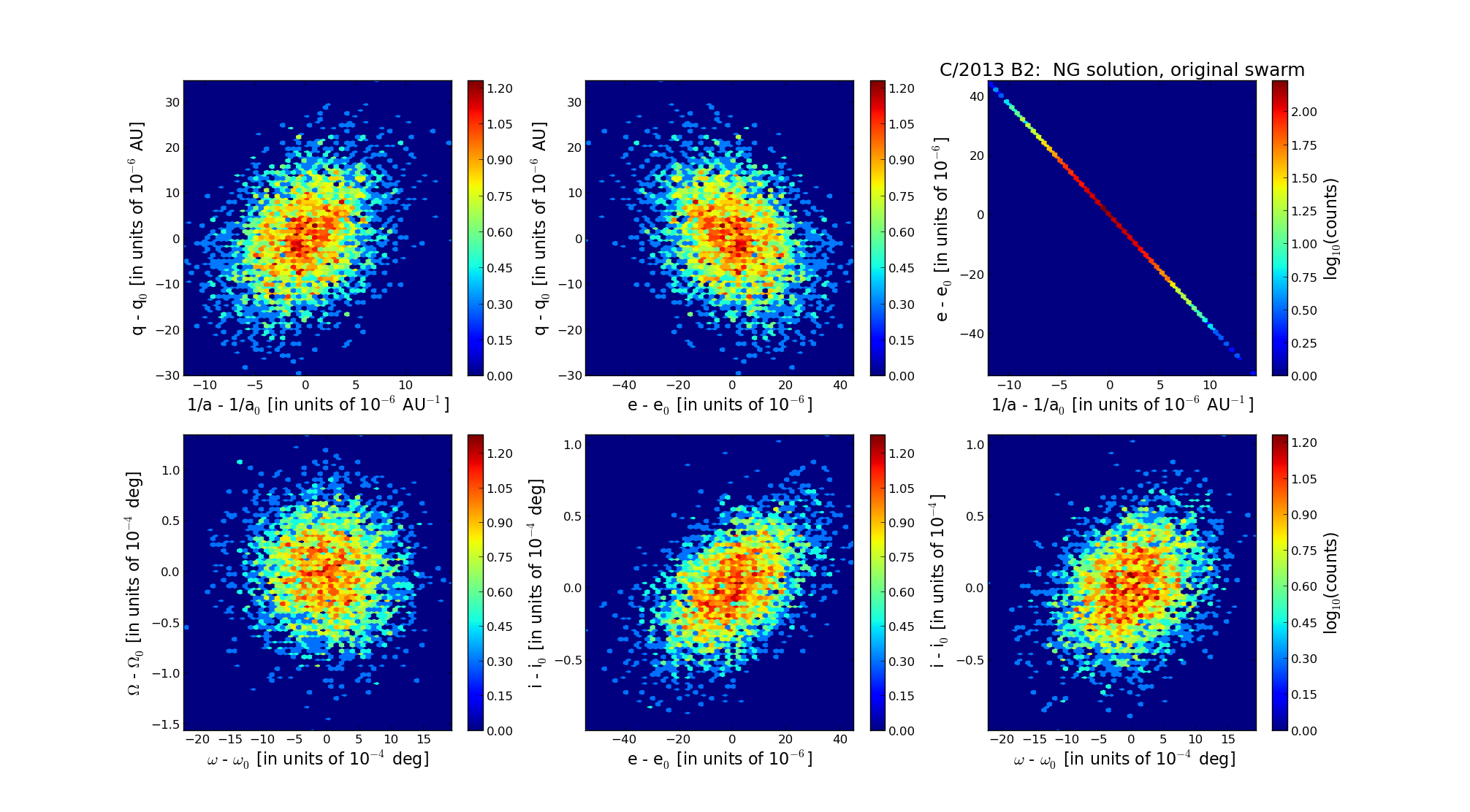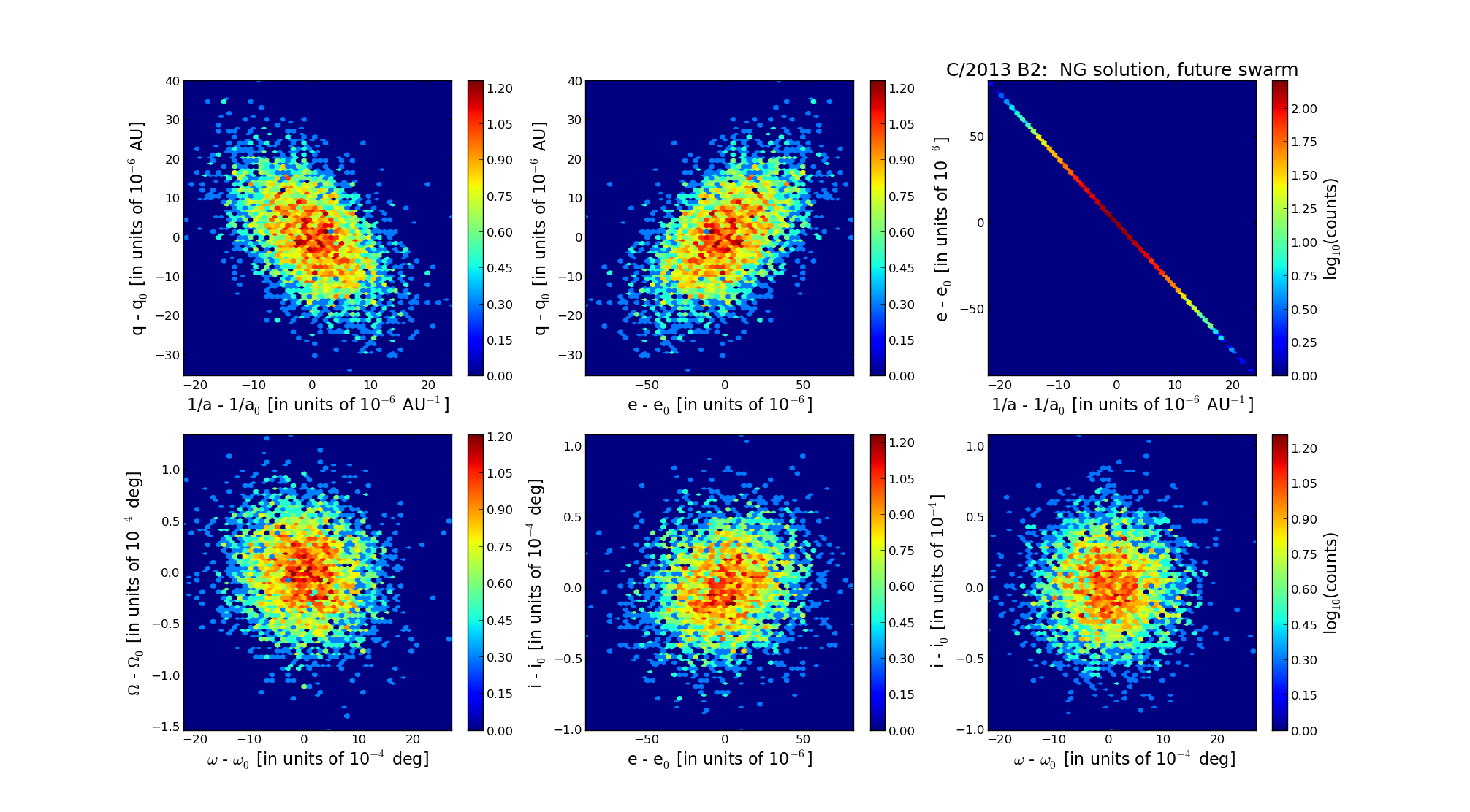| Solar System Dynamics & Planetology Group |
 |
C/2013 B2 Catalina |  |
| Solar System Dynamics & Planetology Group |
 |
C/2013 B2 Catalina |  |
| number of observations | 132 |
| number of residuals | 260 |
| data interval | 2013 Jan. 16 — 2014 Mar. 30 |
| rms [arcsec] | 0.29 |
| orbit quality class | 1a |
| Epoch (TT) | 20130707.0 | = JD 2456480.5 |
| time of perihelion passage (TT) | 20130701.537627 | ± 0.001891 |
| perihelion distance | 3.73413270 | ± 0.00000595 |
| eccentricity | 1.00261361 | ± 0.00001156 |
| argument of perihelion [deg] | 156.438198 | ± 0.000358 |
| longitude of the ascending node [deg] | 331.957131 | ± 0.000038 |
| inclination [deg] | 43.457148 | ± 0.000027 |
| inverse semimajor axis [10-6 au-1] | -699.92 | ± 3.09 |
| Nongravitational parameters [10-8 au/day2] | A1 = 403.22 ± 1978.10 | A2 = 7577.20 ± 1582.10 | A3 = 0.0 (assumed) |

| Epoch (TT) | 17091029 | |
| time of perihelion passage (TT) | 20130701.532995 | ± 0.002525 |
| perihelion distance | 3.73287078 | ± 0.00000891 |
| eccentricity | 0.99974951 | ± 0.00001381 |
| argument of perihelion [deg] | 156.436007 | ± 0.000559 |
| longitude of the ascending node [deg] | 332.056609 | ± 0.000038 |
| inclination [deg] | 43.476729 | ± 0.000026 |
| inverse semimajor axis [10-6 au-1] | 67.10 | ± 3.70 |

| Epoch (TT) | 23190125 | |
| time of perihelion passage (TT) | 20130701.507435 | ± 0.003394 |
| perihelion distance | 3.72667569 | ± 0.00001034 |
| eccentricity | 0.99914562 | ± 0.00002434 |
| argument of perihelion [deg] | 156.311274 | ± 0.000660 |
| longitude of the ascending node [deg] | 331.953004 | ± 0.000037 |
| inclination [deg] | 43.487815 | ± 0.000027 |
| inverse semimajor axis [10-6 au-1] | 229.26 | ± 6.53 |